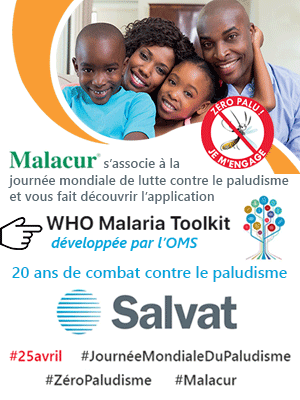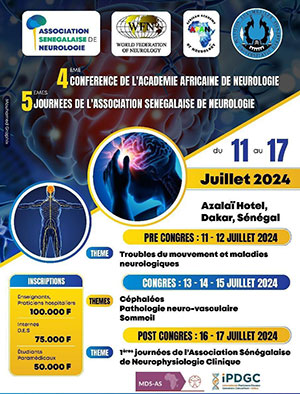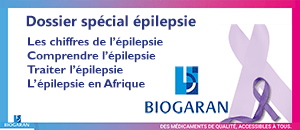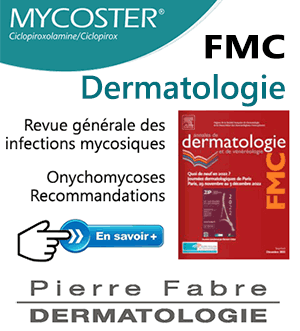← retour Santé tropicale
Accès aux sites pays ![]()
![]() BENIN
BENIN![]() BURKINA FASO
BURKINA FASO![]() CAMEROUN
CAMEROUN![]() CENTRAFRIQUE
CENTRAFRIQUE![]() CONGO
CONGO![]() COTE D'IVOIRE
COTE D'IVOIRE![]() GABON
GABON
![]() GUINEE
GUINEE![]() MADAGASCAR
MADAGASCAR![]() MALI
MALI![]() R.D. CONGO
R.D. CONGO![]() SENEGAL
SENEGAL![]() TOGO
TOGO
← retour Santé tropicale
Accès aux sites pays ![]()
![]() BENIN
BENIN![]() BURKINA FASO
BURKINA FASO![]() CAMEROUN
CAMEROUN![]() CENTRAFRIQUE
CENTRAFRIQUE![]() CONGO
CONGO![]() COTE D'IVOIRE
COTE D'IVOIRE![]() GABON
GABON
![]() GUINEE
GUINEE![]() MADAGASCAR
MADAGASCAR![]() MALI
MALI![]() R.D. CONGO
R.D. CONGO![]() SENEGAL
SENEGAL![]() TOGO
TOGO

Publié dans Médecine d'Afrique Noire 6611 - Novembre 2019 - pages 555-561
 Les anomalies de persistance du canal péritonéo-vaginal au centre de santé de référence de Banamba (Mali). A propos de 39 cas associés à une revue de la littérature
Les anomalies de persistance du canal péritonéo-vaginal au centre de santé de référence de Banamba (Mali). A propos de 39 cas associés à une revue de la littératureAuteurs : D. Sangare, K. Diarra, S. Niare, D. Coulibaly, A. Ballo, R. Samake, M. Diallo, A. Diallo, I. Diarra, M. Sanog, H.J.G Berthe, M.L. Diakite - Mali
Introduction : La persistance du Canal Péritonéo-Vaginal (CPV) est une malformation congénitale liée à la non-fermeture du CPV constituant ainsi le support anatomique de la hernie inguinale ou inguino-scrotale, de l’hydrocèle communicante ou du kyste du cordon. L'objectif de notre étude était d'apprécier les aspects cliniques et thérapeutiques des anomalies du CPV dans un centre de santé de référence au Mali.
Patients et méthode : Il s’agissait d’une étude transversale et descriptive réalisée dans le centre de santé de référence de Banamba situé à quelque 140 km au Nord-Est de Bamako, entre janvier 2016 et septembre 2018, colligeant 39 patients présentant une ou des anomalies de persistance du CPV.
Résultats : Au cours de ses 21 mois d’étude nous avons opéré 39 cas de persistance du CPV représentant 5,01% de l’ensemble des patients opérés en chirurgie. L’âge moyenne de nos patients était de 5,6 ± 5 ans avec des extrêmes allant de 2 mois à 23 ans et étaient tous de sexe masculin. Trois de nos patients étaient issus d’une grossesse non à terme soit 7,7%. La tuméfaction scrotale était le motif de consultation le plus fréquent 16 patients sur 39 soit 41% suivi respectivement de la tuméfaction inguinale et inguino-scrotale 7 patients chacune soit 17,9% et la tuméfaction funiculaire 10,3%. Ont été retrouvés comme diagnostic 19 cas d’hydrocèle soit 48,7%, 15 cas de hernie inguinale ou inguino-scrotale soit 38,5%, quatre cas de kyste du cordon soit 10,2% et une association kyste du cordon hydrocèle. L’atteinte était droite chez 18 patients soit 46,1%, gauche chez 16 patients soit 41,02% et bilatérale chez cinq patients soit 12,8%. L’ectopie testiculaire était présentée chez trois patients soit 7,7%. La tranche d’âge la plus représentée au moment de l’intervention était de deux à cinq ans avec 27 patients soit 69,2% et quatre de nos patients ont été opérés avant un an soit 10,2%. L’abord inguinal a été effectué chez tous nos patients avec ligature et section du processus vaginal. Onze de nos patients ont présenté une complication post-opératoire à type d’hématome inguinal ou inguino-scrotal soit 28,2%, une suppuration pariétale a été notée chez 2 patients soit 5,1%. Nous n’avons pas enregistré de séquelle post-opératoire ni de récidive.
Conclusion : L’une des pathologies malformatives fréquente à l’enfance mais de diagnostic facile. Sa prise en charge est chirurgicale à partir de deux ans. Le pronostic est bon en général excepté quelques cas d’atrophie testiculaire et de récidive.
Introduction: Congenital malformation related to non-closure of the peritoneal-vaginal canal (PVC) thus constituting the anatomical support of inguinal or inguino-scrotal hernia, communicating hydrocele or cord cyst. A common pathology with an estimated incidence of 2.4% and varies according to the authors between 0.8-4.4% and 13.44% [4].
Objective: To appreciate the clinical and therapeutic aspects of PVC abnormalities in a reference health center in Mali.
Patients and methods: This was a cross-sectional and descriptive study conducted in the Banamba health center located some 140 km north-east of Bamako, between January 2016 and September 2018, gathering 39 patients with one or persistence anomalies of PVC
Results: During its 21-month study we performed 39 cases of persistence of PVC representing 5.01% of all patients operated on in surgery. The average age of our patients was 5.6 ± 5 years with extremes ranging from 2 months to 23 years and were all male. Three of our patients had a non-term pregnancy of 7.7%. The scrotal swelling was the most frequent reason for consultation 16 patients out of 39 or 41% followed respectively by inguinal and inguino-scrotal swelling 7 patients each or 17.9% and funicular swelling 10.3%. Diagnosis was found in 19 cases of hydrocele (48.7%), 15 cases of inguinal or inguino-scrotal hernia (38.5%), four cases of cord cyst (10.2%) and a cystic cord association (hydrocele). Stroke was right in 18 patients, 46.1%, left in 16 patients 41.02% and bilateral in five patients, 12.8%. Testicular ectopia was presented in three patients, 7.7%. The most represented age group at the time of the intervention was two to five years with 27 patients or 69.2% and four of our patients were operated before one year or 10.2%. The inguinal approach was performed in all our patients with ligation and section of the vaginal process. Eleven of our patients had a post-operative complication such as inguinal or inguino-scrotal hematoma (28.2%), parietal suppuration was noted in 2 patients (5.1%). We did not record postoperative sequelae or recurrence.
Conclusion: One of the malformative pathologies common in childhood but easy diagnosis. Its
management is surgical from two years. The prognosis is good in general except for some cases of testicular atrophy and recurrence.
Cet article est actuellement coté ![]() (2,5 étoiles) par les abonnés de Médecine d'Afrique Noire.
(2,5 étoiles) par les abonnés de Médecine d'Afrique Noire.
Il a été consulté 8750 fois, téléchargé 10 fois et évalué 2 fois.
Aucun commentaire n'a encore été ajouté à propos de cet article
Restez informés : recevez, chaque mercredi, la lettre d'informations de Santé tropicale. Inscriptions
Ce contenu gratuit vous est destiné :








![]() Adresse
Adresse
![]() Téléphone
Téléphone
![]() Contactez-nous
Contactez-nous
Actualités
Articles médicaux